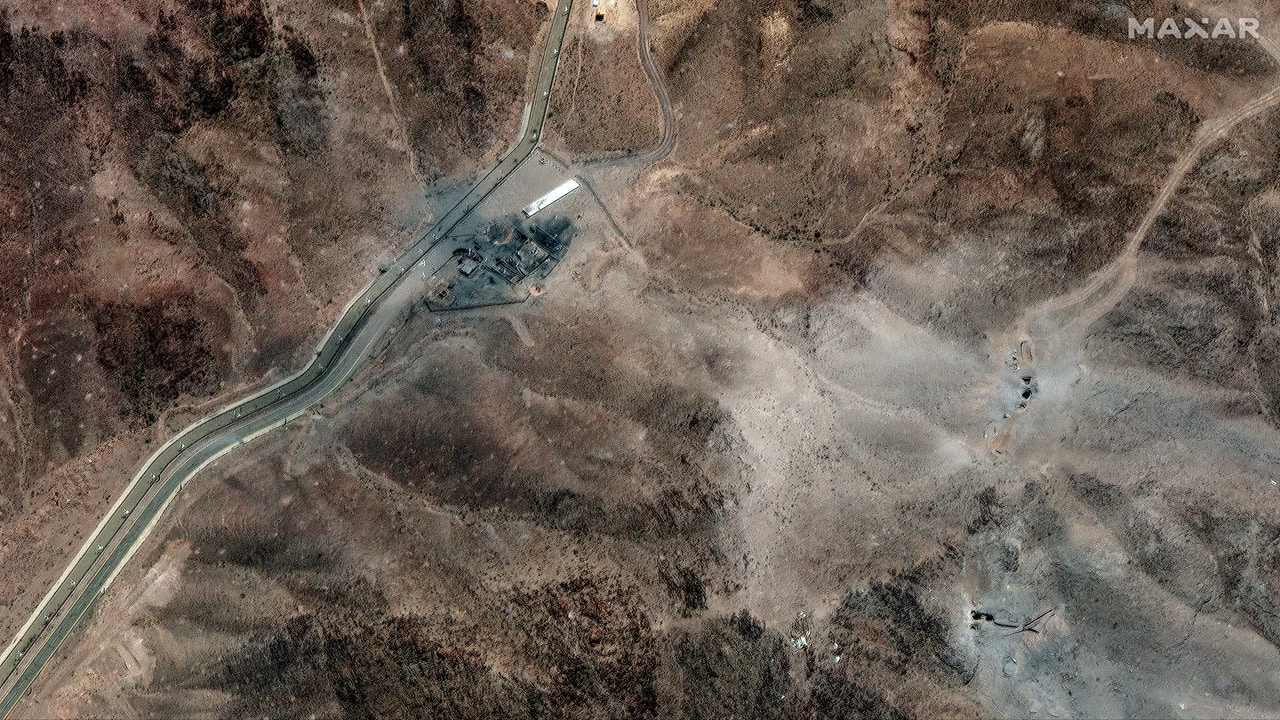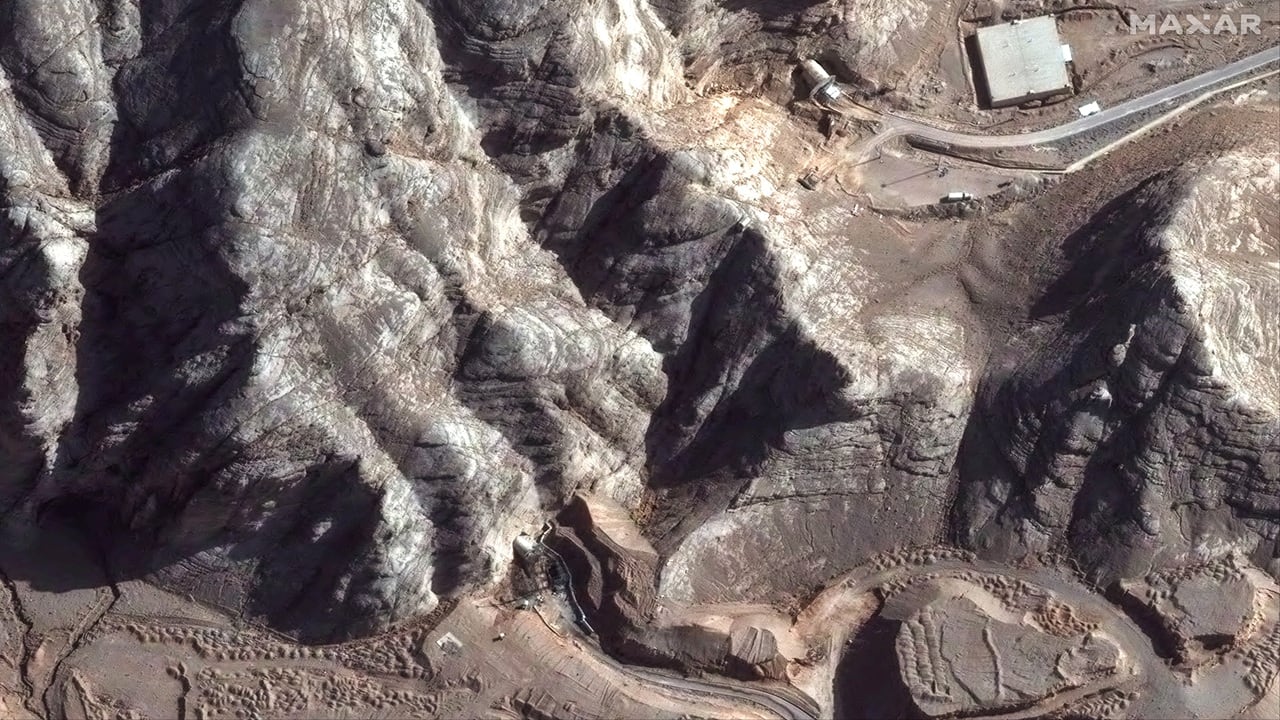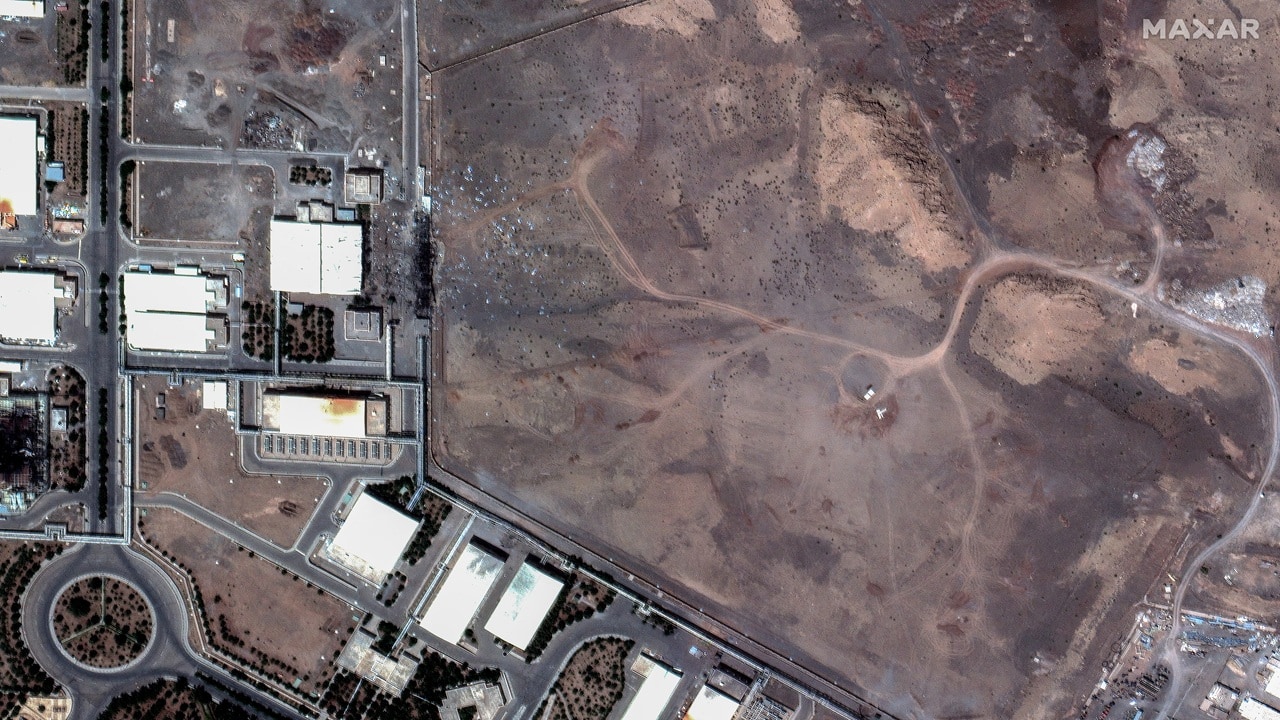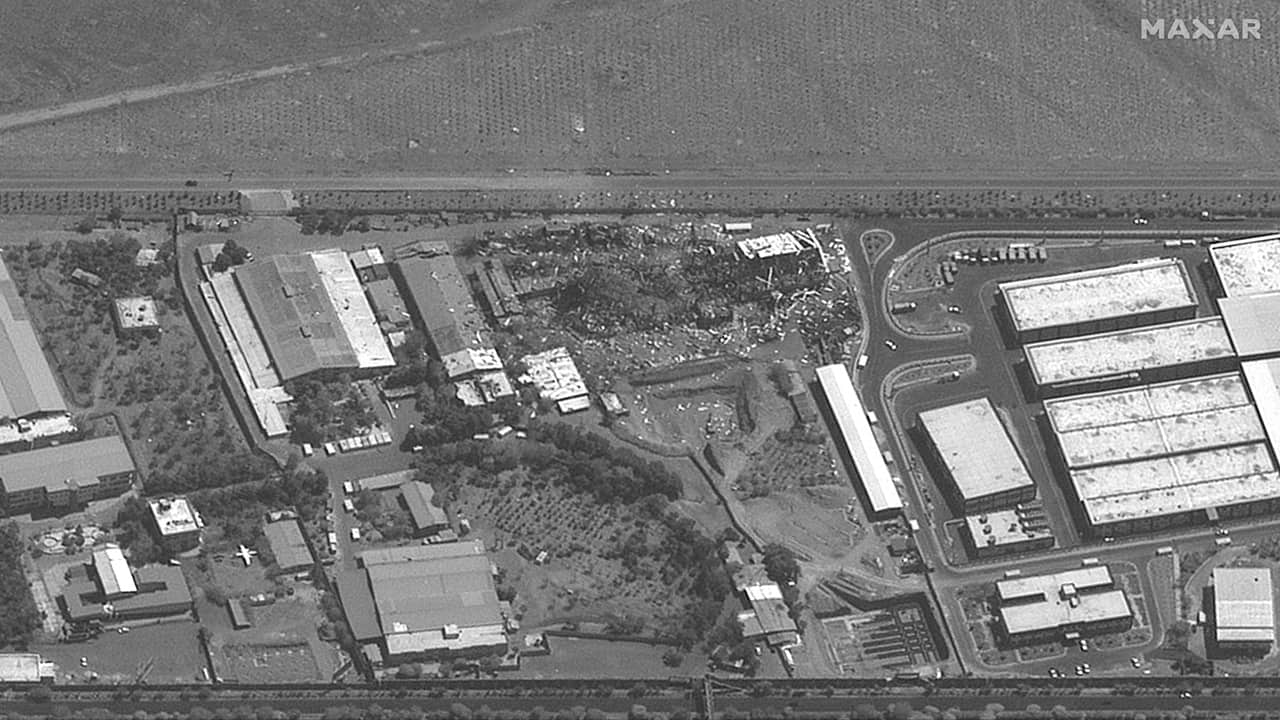



Newly-released satellite imagery has revealed significant destruction at three of Iran’s key nuclear facilities, Fordow, Natanz, and Isfahan, just days after the targeted June 22 U.S. airstrikes carried out by B-2 stealth bombers.
The high-resolution images, published by Maxar Technologies on June 24, provide the clearest visual evidence yet of the scale and precision of the coordinated attacks.
The strikes reportedly aimed to cripple core components of Iran’s nuclear program, long viewed by Washington as a growing threat to regional and global stability.
The imagery shows widespread surface damage, including craters near tunnel entrances and the destruction of support infrastructure at all three sites.
Fordow
At Fordow, a heavily fortified enrichment facility buried beneath a mountain near Qom, the images display a number of craters around tunnel entrances and key access roads. Several surface structures were completely destroyed, and one direct hit blasted a crater into a critical approach road, reports Fox News.
 This handout satellite picture provided by Maxar Technologies shows new airstrike craters at perimeter installation on Iran's Fordow Fuel Enrichment Plant (FFEP), northeast of the city of Qom.
This handout satellite picture provided by Maxar Technologies shows new airstrike craters at perimeter installation on Iran's Fordow Fuel Enrichment Plant (FFEP), northeast of the city of Qom.
Isfahan
At Isfahan, the Nuclear Technology Center suffered significant damage, as is evident from the images released. Satellite visuals depict newly-damaged tunnel entrances and buildings on the surface. Notably, this is also in line with reports that the U.S. intended to dismantle and disable underground components previously considered unreachable.
 This handout satellite picture provided shows damage caused by recent airstrikes on nearby tunnel entrances near Isfahan nuclear enrichment facility in central Iran.
This handout satellite picture provided shows damage caused by recent airstrikes on nearby tunnel entrances near Isfahan nuclear enrichment facility in central Iran.
Natanz
At Natanz, a facility long scrutinised by the West, at least two large craters can be seen, later filled with dirt. These strikes reportedly targeted underground centrifuge halls, key to Iran’s uranium enrichment operations.
 This handout satellite picture provided by Maxar Technologies shows airstrike craters over underground centrifuge halls filled and covered with dirt in the Natanz nuclear enrichment facility in central Iran.
This handout satellite picture provided by Maxar Technologies shows airstrike craters over underground centrifuge halls filled and covered with dirt in the Natanz nuclear enrichment facility in central Iran.
Tehran
In addition to the nuclear facilities, Maxar imagery documented separate airstrike damage in Tehran, particularly near Shahid Rajaee University, where suspected nuclear research sites were allegedly targeted. The imagery shows widespread destruction, though no official statement has clarified the exact nature of the targets.
 This handout satellite picture provided by Maxar Technologies shows destroyed buildings adjacent to Mehrabad International Airport in Tehran.
This handout satellite picture provided by Maxar Technologies shows destroyed buildings adjacent to Mehrabad International Airport in Tehran.
Furthermore, International Atomic Energy Agency (IAEA) chief, Rafael Grossi, has confirmed that core buildings and subsurface infrastructure at all three locations were struck.
U.S. President Donald Trump had hailed the operation as a "very successful mission," claiming Iran’s nuclear capability had been “totally obliterated.”
A classified assessment by the Defense Intelligence Agency (DIA) and U.S. Central Command’s battle damage review, obtained by multiple media outlets, however, paints a more cautious picture.
According to the report, which has now gone public, the core atomic infrastructure, especially deeply buried systems, remained largely intact. It further notes that Iran’s centrifuges are “largely operational,” and its stockpile of enriched uranium was not destroyed.
As per U.S. intelligence, undisclosed Iranian nuclear facilities, not targeted in the strike, continue to function.
This, nonetheless, contradicts President Trump’s repeated claims.
Trump was quick to dismiss the reports, labelling them as "fake news," accusing CNN and the New York Times of conspiring to "demean one of the most successful military strikes in history.”
Israeli Prime Minister Benjamin Netanyahu also seems to be supporting the US President's rhetoric, asserting that the attack had eliminated two major threats - Iran’s nuclear capabilities and its ballistic missile arsenal.
“We have removed two immediate existential threats to us: the threat of nuclear annihilation and the threat of annihilation by 20,000 ballistic missiles,” he asserted late Tuesday evening, hours after the ceasefire came into effect.
A fragile ceasefire between Israel and Iran appeared to be holding on Wednesday morning, marking a glimmer of stability after nearly two weeks of intense cross-border conflict.
How's the Israel-Iran ceasefire shaping up? Catch live updates here.
Late Tuesday evening, Israel lifted emergency security measures across its territory, signaling a shift toward de-escalation. Meanwhile, Iranian President Masoud Pezeshkian declared what he called “the end of a 12-day war imposed on the Iranian people,” marking a rare public statement acknowledging the scale of the confrontation.
The truce, announced early Tuesday morning, had followed sharp criticism from Trump, who earlier in the day rebuked both nations for continuing hostilities despite his call for a ceasefire.
Discover the latest Business News, Sensex, and Nifty updates. Obtain Personal Finance insights, tax queries, and expert opinions on Moneycontrol or download the Moneycontrol App to stay updated!
Find the best of Al News in one place, specially curated for you every weekend.
Stay on top of the latest tech trends and biggest startup news.